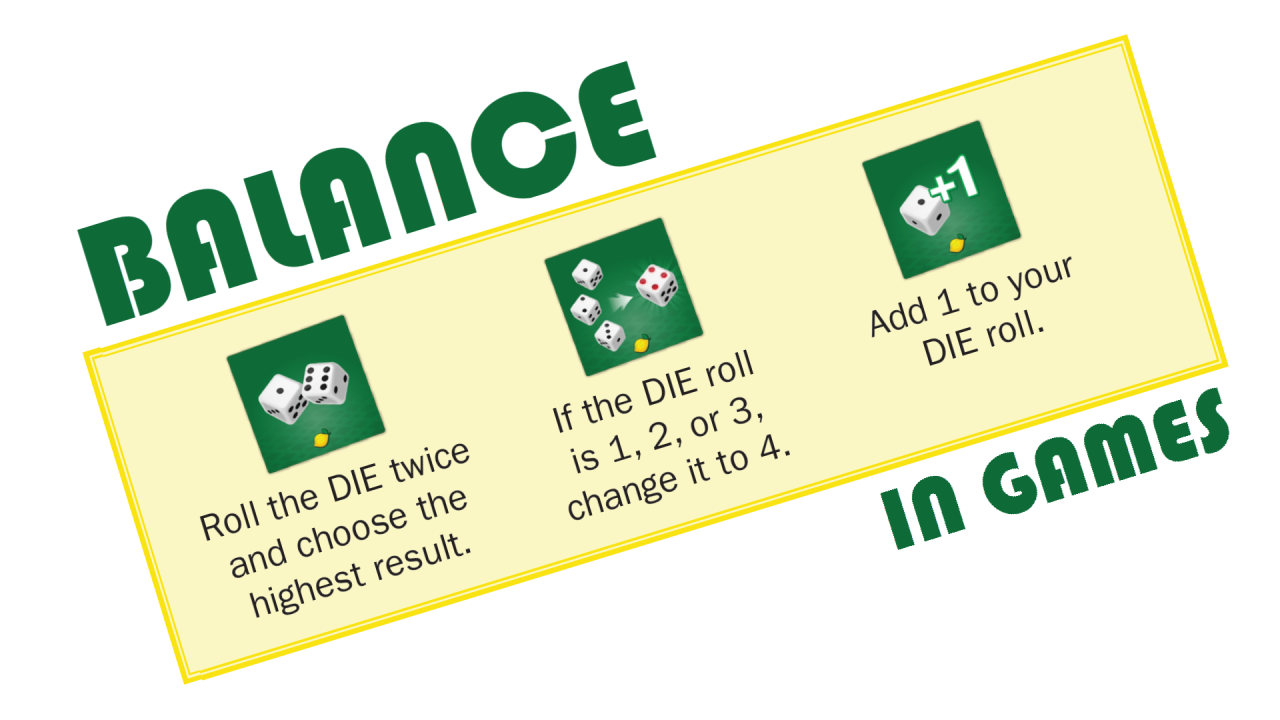
Designing Balanced Gameplay — Using Math, Yuck! 🙂
One of the many challenges game designers face is ensuring the gameplay is balanced.
No action should be so strong as to overpower player strategy. Otherwise, players will feel the game is too random and unfair.
Math to the rescue! Don't worry, this is easy to follow and you can use AI to do it for you.
Powerups
Here is one example of a simple powerup I designed for our upcoming new Lemonade Stand Board Game.
Players roll a die to compete to sell lemonade to customers — highest roll wins the sale.

Players can gain an advantage by purchasing one of the powerups shown here:

Balance
To keep the gameplay simple, each player may only have one powerup and they all cost the same amount of money. So we must make sure that each powerup provides an equivalent benefit — in a random situation of a die roll.
To determine balance, we have to use math:
- "Add 1 to your die roll" means the result will be 2,3,4,5,6,7. Adding them up totals 27. The average = 27÷6 = 4.5.
- "If the die roll is 1, 2, or 3, change it to 4" means there are 6 permutations — 4,4,4,4,5,6. Adding them up totals 27. The average = 27÷6 = 4.5
- "Roll the die twice and choose the highest result" means there are 6x6 = 36 permutations (1 and 1, 1 and 2, 1 and 3, etc). Adding up the highest of the two rolls for each of the 36 permutations totals 161. The average = 161÷36 = 4.472
With all three powerups at or close to 4.5 means we have balance — success!
Don't like math? No problem — ask AI to calculate the numbers for you.
Receive this newsletter by email —
I'm Mathew Georghiou and I write about how games are transforming education and learning. I also share my experience as an entrepreneur inventing products and designing educational resources used by millions around the world. More about me at Georghiou.com